الاثنين، 17 فبراير 2020
الأربعاء، 6 يونيو 2018
Killer Joe: Why Orlando Bloom wanted to play a misogynist and a sociopath

 Image copyrightMARC BRENNER
Image copyrightMARC BRENNER
Katy Perry didn't mean to go viral last week when she left a comment on Orlando Bloom's Instagram account.
"I need a season pass for that ass," Bloom's on-off girlfriend wrote after he posted an image promoting his new West End role in Killer Joe.
A few minutes went by before she followed up with: "Oops. I meant to send that to you privately."
Fans reacted with glee to Perry's apparent mishap, but it's only when you go and see Killer Joe that you realise what spurred her to make the initial comment.
The play features a great deal of nudity - including from Bloom himself. But, the actor tells BBC News: "It was all handled very tastefully.
"I would say the sensitivity around, not just the nudity, but the characters, the world, it's all been handled with such integrity, it's made us all feel safe.
"So whilst we're in this very intimate house, and you literally have people on stage with you, I think we all feel very safe in the little trailer within that world that we created."
Killer Joe tells the story of a struggling family who live in a trailer park, who come up with a plan to have their mother murdered in order to cash in on her insurance policy.
They hire a contract killer - played by Bloom in the show's titular role - to carry out the deed. But things, of course, start to go wrong.
The Tracey Letts play was made into a film in 2011 film starring Matthew McConaughey, but Bloom says he didn't let the movie influence his performance.
"I have to say I'm a big fan of Matthew McConaughey so I did see it years ago, but it wasn't fresh," he says.
"It was a long time ago, because it was the beginning of the McConnaissance.
"It was more interesting to look at other films of that feel and that period like Blood Simple and Badlands."
The role marks Bloom's first theatre role in five years, and his first time in the West End in more than a decade, and the actor is keen for fans of his previous work on blockbusters like Pirates of the Caribbean to see him in a different context.
"I've been wanting to do something on stage for a very long time," he says.
"It's been five years since I did Romeo [on Broadway] and I haven't been in London since I did In Celebration [a 2007 production of David Storey's play].
"I was asked about [Killer Joe] a year ago, then it came back around, and I just wanted to change the conversation from Pirates and Legolas to something more dynamic, dark and interesting."
In the show's plot, one of the conditions of Joe's contract is he is allowed to begin a sexual relationship with Dottie, the 20-year-old daughter of the family, as a "retainer" until he is paid.
Seeing a young woman being used as a commodity makes for uncomfortable viewing, despite Dottie's willingness to go along with the arrangement.
But, Bloom argues, Joe has some redeeming qualities.
"This play was written 20 years ago. We are unpicking the basis of life's characters," he says.
"And we're trying to mine the gold, mine the compassion, have a sense of understanding and bring some sense of love and joy to it, because that's what each of those characters is asking for you.
"As an actor, you have to find that. To be able to stand on stage I have to look at it and go, 'what is it about Joe that I can compassionately understand for myself?'
"He's a sociopath, 100%, he's misogynistic, but there's a moral quality. I had to find things for myself."
In addition to Bloom's nudity in the show, Sophie Cookson, who plays Dottie, is also seen naked during an intense seen where Joe takes her virginity.
But the actress says: "For me it never feels gratuitous, it's very much a part of the story.
"Dottie is the the joy and the lightness and the purity of the piece, so to see her stripped of all of that... and everyone talks about corrupting each other, that is a moment, even though it's consensual, it's very much a coming-of-age moment."
Bloom chips in: "I think if Dottie wasn't played as somebody who wasn't as strong as Sophie is playing it, you'd get a different take on this piece of writing."
Sophie agrees: "She could very easily be a victim." Bloom adds: "And that would be a mistake."
Critics saw the show for the first time this week, and reviews have been mixed.
The Stage gave it the most scathing review, awarding it one star and describing it as "nasty to a fault, and shocking for no other reason than to shock".
"Confused about whether it's comic or not, farce or horror, its cast of grotesques, acted to their extremist edges, encourages laughter more often than revulsion.
"That's a queasy directorial decision."
But in a four-star review for The Times, Dominic Maxwell wrote: "The acting, the torrid atmosphere, is mostly a triumph.
"I challenge anyone to explain Letts's play fully, but you come out of this unsettling, nasty, amusing evening knowing that you have had an experience."
The Independent's Paul Taylor said: "Bloom's fine performance gathers in intensity and by the end he's in full sinister command of the stage."
But, he added: "The production will sell out because of its star but, in general, it's disappointing and leaves the play looking somewhat dated."
Others were also unenthusiastic, with Henry Hitchings giving it two stars in The Evening Standard, and The Hollywood Reporter describing it as "half-cocked".
States Should Boost Public Higher Ed Spending

Have America's public universities lost sight of their original mission of increasing social mobility? A growing body of research suggests that sharp cuts in public funding during the Great Recession threaten to undermine state schools' historic role as socioeconomic ladders for bright, low-income students – but it also shows how to revive this core function.
Public universities were intended to offer a high-quality education at a reasonable cost to students from families of modest means. Most began as land-grant schools, created by states from federal land-grant funds to propagate practical knowledge, including agricultural science and engineering, alongside the traditional liberal arts. Their founders believed that making college affordable would yield more productive farmers, factory workers, craftsmen and businessmen, while giving promising working-class students a route to professional careers in medicine, law, and accounting. The legislation signed by President Abraham Lincoln to create land-grant trusts in 1862 stated that the schools are intended for the "liberal and practical education of the industrial classes," i.e., students from blue-collar backgrounds.
For years, public universities performed this core mission with great success, fueling unprecedented social mobility in American society in the 20th century, helping millions of low-income students enter the middle class. And we're still reaping the benefits, as demonstrated by the fact seven of the top 10 schools for social mobility in 2014 were in the City University of New York (CUNY) system, according to research by Raj Chetty, who has studied long-term trends in income and education.
But low-income students from low-income families are still far less likely to go to college than their well-off peers: in 2015, 58 percent of recent high school graduates from families in the bottom fifth of incomes (below $20,582) were enrolled in secondary education, compared to 82 percent from the top fifth (above $100,010). And the economic importance of higher education looms ever larger: According to a study from Georgetown University, the proportion of jobs requiring at least some college will increase from 59 percent in 2007 to two-thirds in 2020.
ADVERTISING
Moreover, data from the last two decades also reveal a troubling trend, as financial woes have forced many public universities to start acting more like their private counterparts, in effect pricing out deserving low-income students.
The Great Recession was difficult for America's public universities: 86 percent of states have cut their spending per student over the last decade, with total state funding for higher education shrinking by $9 billion from 2008-2017, while average spending per student fell by $1,448 or 16 percent over this period.

Meanwhile from 2008-2017 average tuition at state universities jumped by $2,484, or 35 percent – outstripping median household incomes, which grew just 2.1 percent from 2008-2015. As a result, the net cost of attendance for low-income students at four-year public institutions jumped by 12 percent from 2008-2012. By deterring low-income students from enrolling, tuition increases also change the composition of the student body: A 2015 study by researchers at New York University found that each $1,000 increase in undergraduate tuition leads to a 6 percent decrease in campus diversity.
What's more, to offset the budget crunch many state universities are admitting more out-of-state students – who pay tuition comparable to a private institution – to subsidize operations. But courting well-off students from out-of-state also leaves fewer spots for deserving state residents.
Indeed, my new analysis of public university enrollment data shows that, as public universities have begun enrolling more out-of-state students, the proportion of graduating high school seniors who go on to enroll in-state has shrunk. Over the last decade, 41 states have decreased the share of seats held by in-state students, pushing low-income state residents to attend private schools or go out-of-state (if they don't opt out of higher education altogether). Either way, they're paying more for higher education and frequently taking on more debt in loans: From 2008-2015, the average amount of debt incurred by bachelor's candidates at public four-year schools jumped 26 percent to $26,800.
These trends force us to grapple with tough choices as well as answer basic questions about our values. Should public universities be balancing their books on the backs of out-of-state students, as they're currently doing? How many potential students are not attending university because they're being priced out?
In some cases, modest increases in tuition could help reduce the financial pressures that force universities to accept large numbers of out-of-state students. At the same time, it is in the self-interest of state governments to invest in making higher education available to deserving young people at a reasonable price: In addition to the broader economic benefits to the states in GDP and tax base, college education is associated with upward mobility, and public universities largely drive this phenomenon.
Many state governments can afford to spend more on public higher education. In fact while state revenues have largely recovered from the Great Recession, state support for higher education per student remains well below pre-crisis levels. Still, raising spending on higher education will require making some tough choices, which politicians can frame in terms of the need to foster economic mobility. Florida and New York are blazing a trail here with statewide initiatives to defray tuition costs for low-income students. Several public institutions, such as the University of Michigan and Ohio State University, have taken steps to reduce net costs for low-income students – even without additional public subsidies.
In the current national climate, with talk of many people feeling "left behind," public education should be front and center in any budgetary debate. It's also time to have a broader discussion about the goals of public education, and policies that can help return it to its original mission.
100 Women: The modern face of the 'DIY abortion'

 Image copyrightGETTY IMAGES
Image copyrightGETTY IMAGES
Global online searches for abortion pills have more than doubled over the last decade, BBC analysis of Google searches shows.
The findings also suggest that in countries where abortion laws are more restrictive, there is greater search interest in abortion pills.
By buying pills online and sharing medical advice through WhatsApp groups, women are increasingly turning to technology to sidestep legal barriers to abortion.
This is the modern face of the so-called "DIY abortion".
Countries with the strictest laws, where abortion is allowed only to save a woman's life or banned altogether, have over 10 times higher search interest in abortion pill Misoprostol compared to countries with no restrictions, BBC analysis shows.
There are two main methods of inducing abortion; surgical and medical.
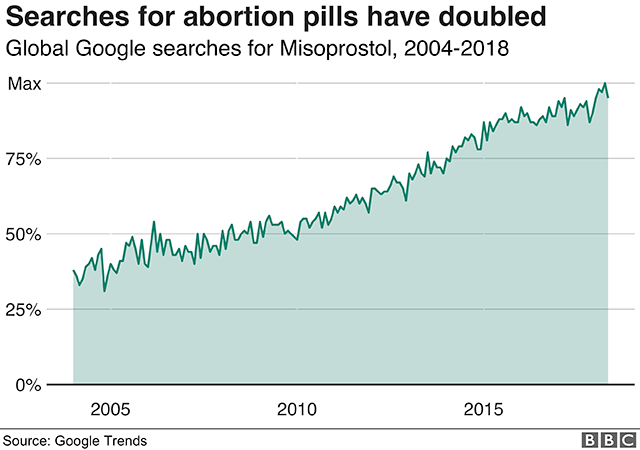
A medical abortion typically involves taking a combination of pills, Misoprostol and Mifeprostone, to induce a miscarriage. Misoprostol can also go by brand names like Cytotec.
While women in countries such as the UK will be prescribed this combination by a doctor, women searching for and purchasing the pills online in countries where access to abortion is restricted are often breaking the law, risking severe punishments.
Ghana and Nigeria are the two countries with the highest search interest in Misoprostol, according to the Google data.
Ghana only allows abortions in cases of rape, incest, foetal impairment or to preserve a woman's mental health.
Nigeria is stricter still: abortion is only allowed in situations where a woman's life is in danger.
Of the 25 countries with highest search interest in Misoprostol, 11 are in Africa and 14 in Latin America.
All but two - Zambia and Mozambique - either ban abortions altogether or allow them only to save a woman's life or health.
The taoiseach (prime minister) Leo Varadkar, who campaigned in favour of liberalisation, has said he hopes new rules will be in place by the end of the year.
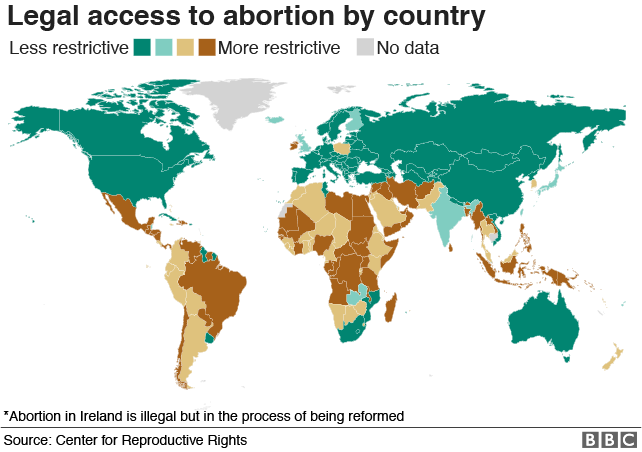
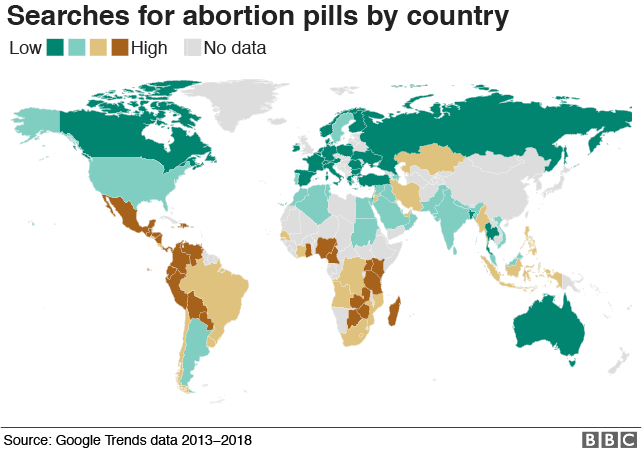
The BBC recently reported on a WhatsApp group, operating in Brazil, helping women get hold of the pills and offering them advice during the procedure.
Juliana (not her real name) was one of the women who sought the WhatsApp group's help.
"I did the procedure alone at my house and reported the time I was going to start to the WhatsApp group," says the 28-year-old.
"What I thought was really nice, is how the other women in the group help each other, sharing information, and discussing doubts and fears. This strengthened me, in a way.
"It's always good to know that you're not alone. The group was very important to me, for me to feel safe."
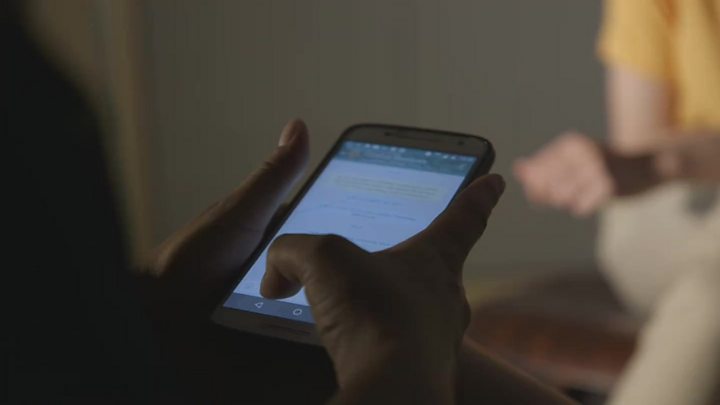
Analysing Google data doesn't just show the countries where search interest is highest. It can also show how often exact phrases are searched about a topic.
"Abortion pills" is a top search phrase on abortion in all the countries analysed by the BBC.
"How to abort" is the most commonly asked question in more than two-thirds of countries.
"How to use Misoprostol", "Misoprostol price", "buy Misoprostol" and "Misoprostol dosage" feature among the most common searches around abortion.
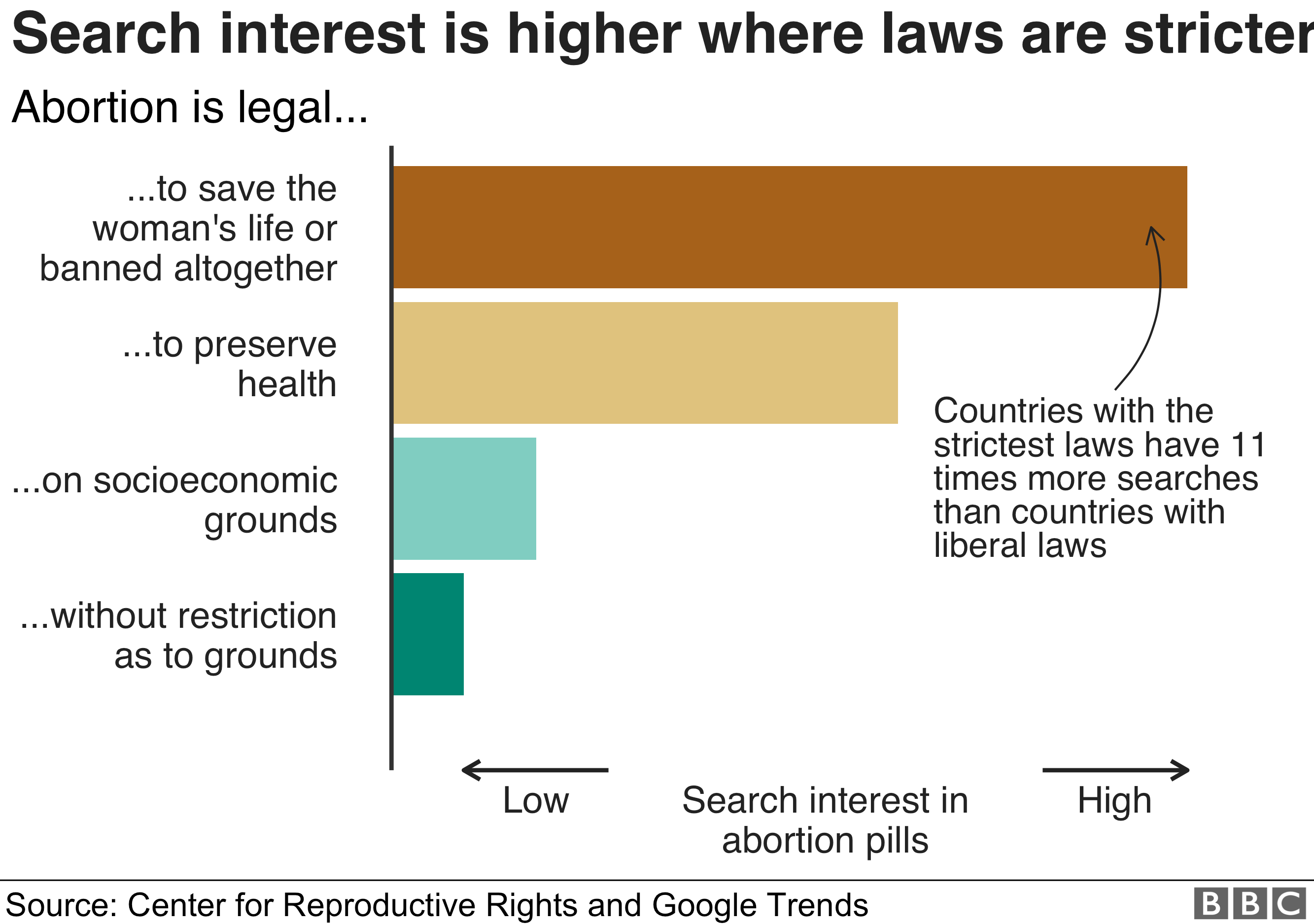
Alongside abortion pills, women are also turning to their search engines to source alternative methods to self-induce abortions.
Herbs like parsley, cinnamon, vitamin C, aspirin and abortion teas (herbal concoctions) all came up as top searched methods.
In half of the countries we looked at "home remedies for abortion" was a top search related to abortion.
Along with a lack of data around safety, the study suggested it was hard for practitioners to control dosage and side-effects.
None of the "home remedies" listed above are considered safe abortion methods by the World Health Organisation.
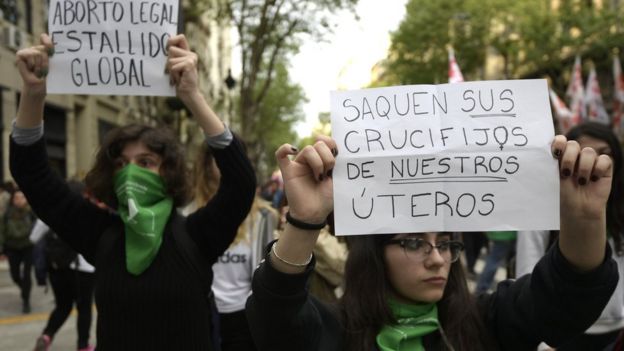 Image copyrightGETTY IMAGES
Image copyrightGETTY IMAGES
Worldwide, about 25 million unsafe abortions take place each year, according to the World Health Organisation, accounting for 45% of all abortions.
These 25 million unsafe abortions are categorised even further.
Although Misoprostol is normally considered a safe method of abortion when administered by a medical professional, when it is used by an untrained person it poses risks.
When it is administered by an untrained person, the World Health Organisation classes it as "less safe" and says this accounts for almost one-third (31%) of the total number of abortions, both safe and unsafe.
"Even when the quality of the drugs is perfect and you follow the protocol to the letter, there is still a failure rate," says Dhammika Perera, the global medical director at Marie Stopes International.
When a woman buys the pills online, or is provided them by an untrained person, it increases the chances of a failed abortion, he says.
These women are also less likely to go for post-abortion care if something goes wrong.
"Stigma, cost, geographical access can all make women hesitate and that puts them at risk," Mr Perera says.
"It's slow progress, but that there is progress, is unquestionable.
"Globally some backward steps have been taken, in the US for example, but I remain hopeful."

The BBC recently heard the story of Arezoo, a law student, who was living in Iran when she found out she was pregnant by her boyfriend of five years. They had always used contraception.
"Every gynaecologist's office I saw I walked in," she says.
"When the doctors checked me and found out I was unmarried and needed an abortion they rejected me immediately."
She faked documents suggesting she was divorced and convinced a doctor to help her.
"He charged me an arm and a leg for eight pills," she says. But the medication had no effect.
Arezoo went online and came across a charity that sends abortion pills to women in countries where the procedure is restricted. There she received advice and support.
Ultimately the pills she got from the doctor made her bleed heavily but the abortion was not completed and Arezoo was rushed to a private hospital a week later accompanied by her sister.
"I lied, I told them my husband was in France and that my documents were in a safe somewhere and I needed to have a safe abortion."
Hospital staff were reluctant and didn't want to admit her.
Arezoo says it was a miracle that they finally gave in and believed her.
"After all that lying and making up stories, I was finally admitted and thirty minutes later the suction procedure was done. It was the worst nightmare of my life," she says.

About 14% of all abortions were "least safe", which means they were provided by untrained persons using dangerous methods, such as the introduction of foreign objects and use of herbal concoctions.
Complications such as infection and incomplete abortion can arise from these methods.
When an abortion is incomplete, medical professionals may either advise further medication, or a surgical option, depending on the situation.
At least 22,800 women die each year from complications of unsafe abortion, the Guttmacher Institute reports.
Reporting by Amelia Butterly and data journalism by Clara Guibourg. Additional reporting by Dina Demrdash, Nathalia Passarinho and Ferenak Amidi.


What is 100 Women?
BBC 100 Women names 100 influential and inspirational women around the world every year. We create documentaries, features and interviews about their lives, giving more space for stories that put women at the centre.
Methodology:
All search data used covers the last five years and comes from Google Trends, which doesn't provide exact search volumes, but relative search interest in a topic from 0-100, where 100 is the highest search interest for the given topic, time and geography. Searches made in different languages or using different names for the medication (e.g. "abortion pill", "Misoprostol" or "Cytotec") are all included in the data.
We looked at global search data for the overall trends, and looked at 14 countries in more detail: Ghana, Nigeria, Honduras, Bolivia, Ecuador, Nicaragua, Kenya, Mexico, US, Colombia, Brazil, Argentina, India, and Ireland. The data on abortion laws for each country is from the Center for Reproductive Rights.

